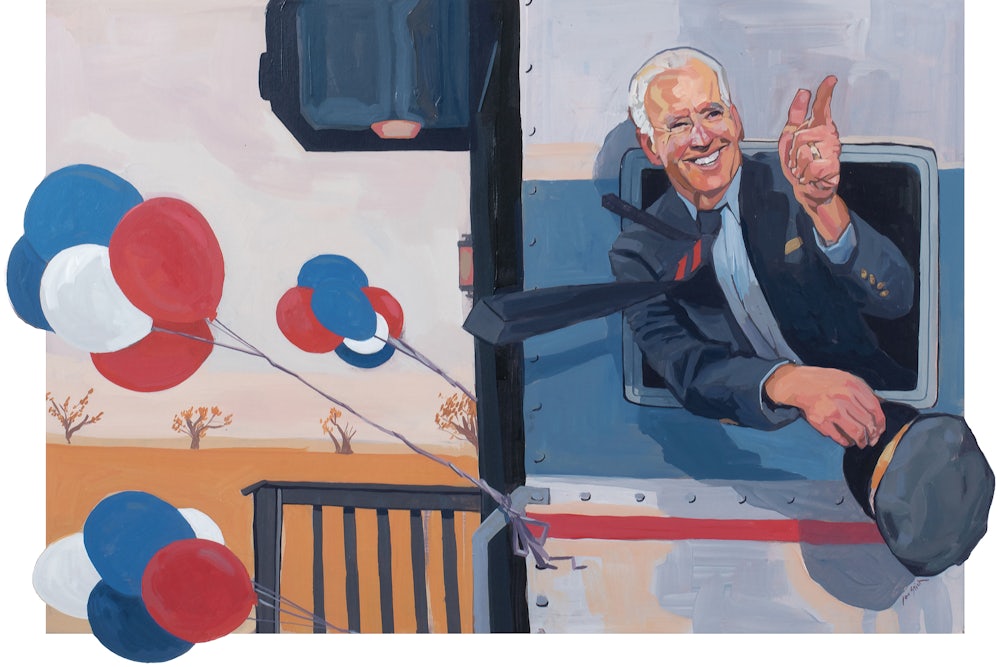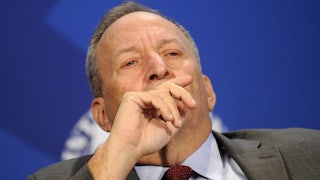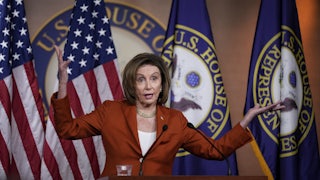With his poll ratings mired in the low 40s and the 2022 electoral outlook for Democrats somewhere between dismal and dire, Joe Biden has been attracting more advice than a fledgling investor in cryptocurrency. Democratic consultants and left-leaning pundits have busily peddled guidance—usually contradictory—about a needed change in direction: “Go left, go right, go bigger, go smaller.”
While everyone is so insistent on where the president should go, no one seems particularly interested in how he gets there. But transportation matters, particularly now that Biden can brag about the $1.2 trillion bipartisan infrastructure bill he signed into law back in November. It is time for Biden to hum a few bars of “Chattanooga Choo Choo” and return to his days riding the rails as Amtrak Joe.
With Biden desperate to escape the White House bubble as omicron ebbs, no form of campaigning suits both this president and this political moment like an old-fashioned whistle-stop tour. Think of Harry Truman aboard his 1948 campaign train, the Ferdinand Magellan, denouncing the “do-nothing Republican Congress.” All presidential political travel is symbolic—far more about media imagery than personally connecting with individual voters. But if Air Force One conjures up the grandeur of the presidency, a train trip carries a sense of accessibility and a much-needed whiff of small-town populism.
Ever since Dwight Eisenhower embraced jet travel as the norm during his second term, presidents have mostly seen the nation they govern from 40,000 feet. But because all White House advance staffs operate out of the same limited playbook (the Secret Service is unlikely to approve a cross-country motorcycle tour), almost every president since Ike has experimented with rail travel. In 2009, for example, Barack Obama boarded a train in Philadelphia (and was joined by Biden in Wilmington) for a trip to Washington for his inauguration.
But even when presidents have hit the rails, it’s usually been a short jaunt. Ronald Reagan created a major stir in 1984 by merely taking a one-day, 150-mile Ohio train trip from Dayton to Toledo. Ever since Air Force One hit the skies, presidents have generally tended to swoop down to visit places that are an easy limousine ride from a major airport. TV viewers don’t care whether a visiting president holds an event in the Atlanta suburbs or halfway across Georgia. But the people who live outside major metropolitical areas are perpetually consigned to literal flyover country.
A Biden whistle-stop tour should be far more ambitious than just a few hours devoted to photo ops and some glib rhetoric about Abraham Lincoln being dubbed “The Railsplitter.” Biden’s trip doesn’t have to be overly political, but merely following the Amtrak route map would reap major electoral benefits. The president might embark on a four-day See-America-Up-Close tour from Philadelphia to St. Paul. This route from the Schuylkill River to the Mississippi would take Biden to the kinds of small towns and struggling cities where the Democrats have lost major ground in the last decade.
No modern politician is as closely associated with trains as Joe Biden. After his wife and infant daughter were killed in a car crash following his election to the Senate, Biden religiously rode the train home to Wilmington to be with his young sons. As Biden, who has taken an estimated 8,200 round trips, put it last year, “I’ve been riding an Amtrak for almost as long as there’s been an Amtrak.” That helps explain why Biden managed to railroad through Congress the largest influx of funding since Amtrak was created in 1971 from the wreckage of the nation’s neglected passenger train lines.
A Biden itinerary along existing Amtrak routes could cross some of the most hotly contested U.S. landscape—especially the swing states of Pennsylvania, Michigan, and Wisconsin. There are gubernatorial races in each, along with Ohio and Minnesota. And Democratic chances of maintaining their Senate majority partly depend on winning a GOP-held open seat in Pennsylvania; knocking off Trump toady Ron Johnson, who’s running for his third term in Wisconsin; and exploiting a potentially bloody Republican primary to pick up the open seat in Ohio.
While the White House and the Secret Service offer superb travel-agent skills that I won’t try to match, the journey of Amtrak Joe might look something like this:
Day One: The route cutting across southern Pennsylvania from Philadelphia to Pittsburgh features the famed Horseshoe Curve outside of Altoona. In political terms, the train passes through the kinds of dying small towns like Johnstown (population: 18,411) in once-Democratic Cambria County, which is now overwhelming Trumpist, voting 68 percent for him in 2020.
Day Two: Biden would cut through the Appalachian portion of Ohio as the train heads north to Cleveland and follow the contours of Lake Erie toward Toledo. Departing from the Amtrak route map for the only time, Biden could end the day by taking a freight route (or cheat by using a limousine or a helicopter) to cover the 60 miles from Toledo to Detroit.
Day Three: The tour across southern Michigan from Detroit to the Indiana border would carry Biden through small cities like Jackson and Battle Creek, both in counties that voted heavily for Trump. In Battle Creek, the president might also meet with union officials who successfully demonstrated their snap, crackle, and pop in an 11-week strike against the Kellogg cereal company.
Day Four: Biden could start the day in Milwaukee where—had there been no pandemic—he would have accepted the 2020 Democratic nomination bathed in confetti. The Amtrak route would take Biden across the state, passing north of Madison, until he ends with a celebration under the vaulted ceiling of the restored century-old Union Depot in St. Paul, Minnesota.
Places like Niles, Michigan, don’t typically get the presidential treatment. A whistle-stop tour would change this equation for Biden, since it would be made to order for local television, which retains a surprising amount of electoral clout. According to the Pew Research Center, as many voters say that they primarily get their political news from local television (16 percent) as from overhyped cable TV networks (also 16 percent). A president giving a speech from the back of his retrofitted Pullman car at a railroad station in Portage, Wisconsin, (population: 10,581) or Latrobe, Pennsylvania, (population: 8,060) would be a major local event. A crowd of, say, 1,000 would appear far more impressive to TV cameras standing trackside than they would look seated in a hotel ballroom.
And while a single presidential visit would not flip the formerly blue rural areas that switched to Trump, even a small dent in boosting liberal spirits could make a difference. If Biden, for example, could cut the GOP vote in Cambria County, Pennsylvania, from 68 to 64 percent, that could swing a narrow Senate election. Democrats have mostly forgotten the lesson that in 2008 Obama carried Indiana—a place that had last abandoned the GOP in 1964—by flooding the state with offices and attention. (On this proposed train route, Biden dips through the Hoosier State on his way north to Wisconsin.)
Biden speechwriters would be able to keep the president on track with a host of obvious themes. Beyond the record funding for Amtrak, the infrastructure bill includes $15 billion to replace lead pipes that contaminate the water in places like Benton Harbor, Michigan, an impoverished city on the president’s route. As Biden crosses Wisconsin, he can stress that the new spending bill will give the state at least $100 million to upgrade broadband. The president could also talk about the economy, the pandemic, and the fraying bonds of community that afflict the United States. Biden’s precise words might matter far less than the reality that the president cared enough to come to the small cities that were once the industrial heartland.
Yes, there would be hecklers in the crowds and the inevitable shouts of “Let’s go, Brandon.” But a half-century after he mounted his first race for the Senate, Biden can take it. In fact, Biden successfully confronting a heckler might make arresting television. What it would avoid is the biggest sin in twenty-first–century politics—being boring.
Whatever happens, Amtrak Joe would never replicate the kind of tin-eared mistake made by Republican Thomas Dewey in 1948. Less than a month before the election, when mid-speech his campaign train backed up a few feet into the crowd, Dewey responded, “That’s the first lunatic I’ve had for an engineer. He probably ought to be shot at sunrise.” It was quickly seen as symbolic of Dewey’s antipathy to labor, and railroad workers painted LUNATICS FOR TRUMAN on the sides of boxcars.
Biden has been training for whistle-stop politics ever since he arrived in Washington battered by tragedy in 1973. This is a president who doesn’t have to be railroaded into hitting the tracks. And the strategy will be seen to be working if voters start cheering Biden after he finishes his speech with shouts of “Give ’em hell, Joe.”






